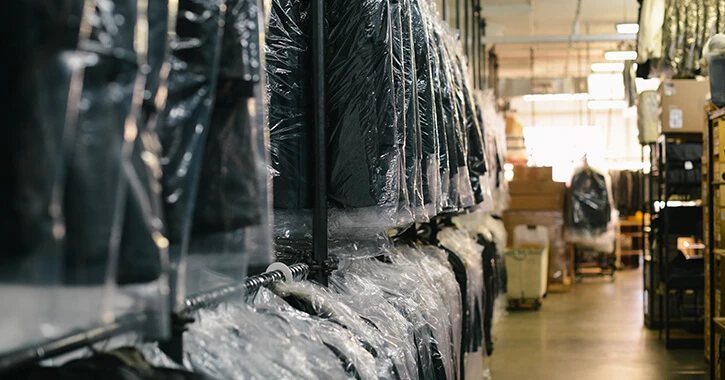The Truth About Dry Clean Only

If you just bought a new wool suit or silk blouse, you may become discouraged when you discover it says “dry clean only” on the tag. Do you really need to obey this instruction? How crucial is it to dry clean certain fabrics, and what makes the process safer than washing? Find the answers to your questions here, so you don’t inadvertently ruin a delicate fabric in the wash.
What Does “Dry Clean Only” Mean?
Most clothing manufacturers are required to list just one option for cleaning a garment, even if multiple safe options are available. However, if you see the phrase “dry clean only,” you should obey it! This tag – most commonly found on silk, acetate, wool, velvet, and taffeta clothing – indicates the item will likely be damaged if you attempt to wash it in water.
Can You Wash Something that Says “Dry Clean” on the Tag?
If the care tag includes the phrase “dry clean,” this is simply the recommended cleaning method, but not the only one you can try. You might see “dry clean” on some polyester, cotton, linen, cashmere, nylon, and acrylic clothing. With the right techniques, you can safely wash these fabrics at home, despite the recommendation on the tag.
Why is the Dry Clean Process Safer for Some Fabrics?
Dry cleaning uses chemical solvents, not water, to clean delicate natural and synthetic fibers. This serves several purposes:
- Dry cleaning helps prevent shrinking, distortion, changes in texture, loss of color, and other damage that can occur when delicate items go through the rough and tumble of a washing machine and dryer.
- Dry cleaning dissolves grease and oil in a way water cannot, meaning this cleaning method can remove certain spills and stains that fail to come out in the wash.
- Dry cleaning keeps delicate garments in like-new condition for longer.
Tips for Washing Dry Clean Clothes at Home
If you’re determined to wash dry clean clothing at home, follow these tips for the best results:
- Test the colorfastness: Dampen a cotton swab with mild laundry detergent and dab it on a hidden seam. If any of the dye comes off, the clothing is not colorfast, and you should have it dry cleaned.
- Test the detailing: Beading, sequins, and other details must be sewn on and colorfast to wash at home. If decorative items are glued on or any dye comes off when you perform the colorfast test, have this clothing item dry cleaned.
- Hand wash particularly delicate items: You can often hand wash polyester, cotton, linen, cashmere, nylon, and acrylic clothing with “dry clean” on the tag. Fill a sink with mild detergent dissolved in cold water. Agitate the garment with your hands, allow it to soak for several minutes, and rinse it with cold water. Avoid wringing the water out, or you could stretch the fabric.
- Carefully machine wash some items: You can also put polyester and other more durable “dry clean” garments in the washing machine. To minimize potential damage, turn the clothes inside out, place them in a mesh bag, use mild detergent, and run the delicate cycle.
- Always skip the dryer: Whether you wash by hand or in the washer, never put dry clean clothes in the dryer because high heat is bound to damage delicate garments. Instead, squeeze (don’t twist or wring) any excess water from the clothing and hang or lay flat to dry.
You are devoted to keeping your clothing in good condition, but don’t neglect your washer and dryer! When you need laundry room services, count on the experienced technicians at Mr. Appliance® to deliver.
 Click to call
Click to call


